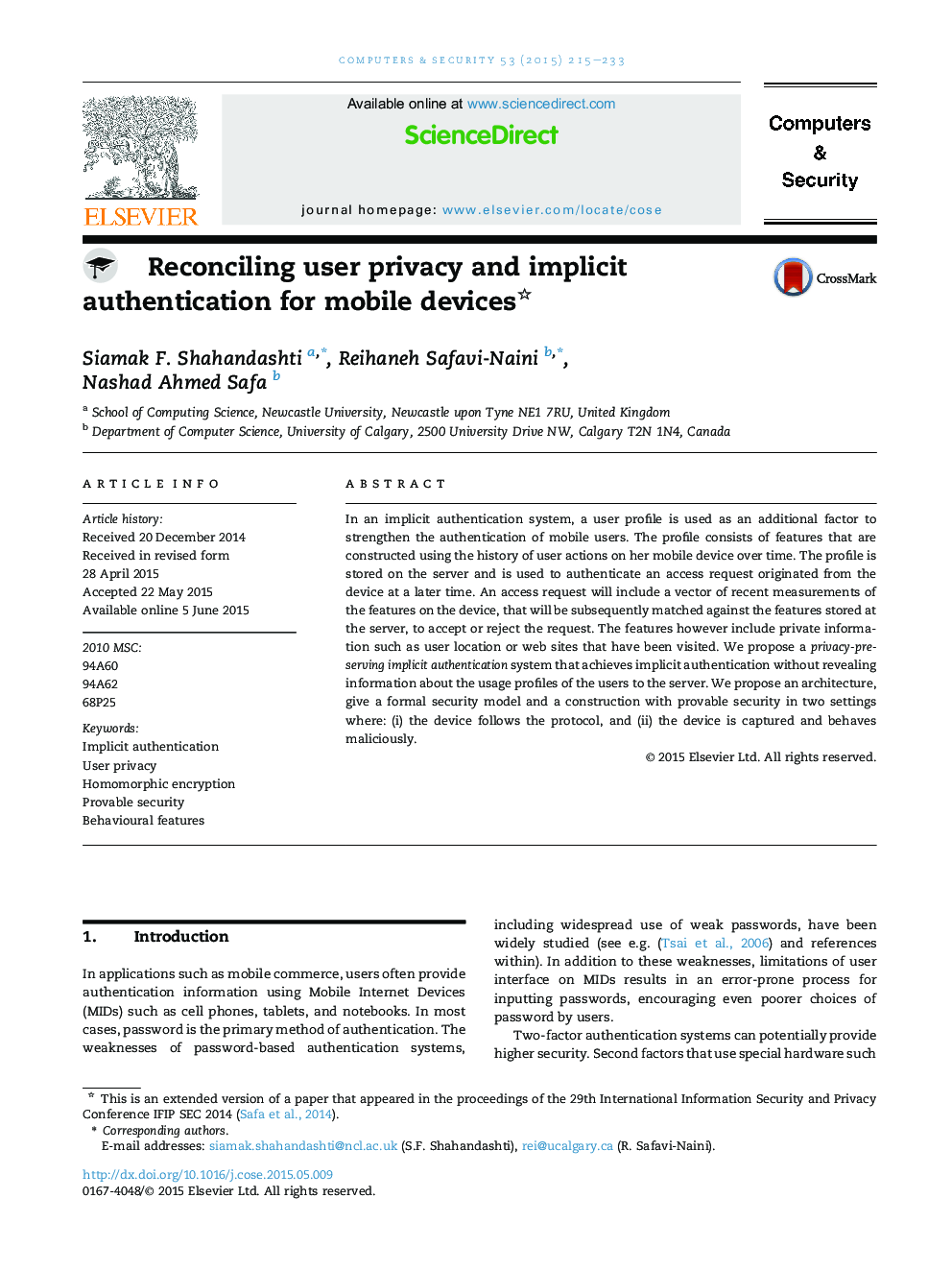| کد مقاله | کد نشریه | سال انتشار | مقاله انگلیسی | نسخه تمام متن |
|---|---|---|---|---|
| 455850 | 695580 | 2015 | 19 صفحه PDF | دانلود رایگان |
• We propose the first protocols that preserve user privacy for implicit authentication on mobile devices.
• User profiles are stored in encrypted format. No trusted third parties are required.
• We propose two protocols that are secure against adversaries capturing a device in 2 cases depending on whether or not they tamper with the device.
• We show that implementations of the two protocols can be efficient enough to run on modern smart-phones in around 300 ms and 2.5 s, respectively.
• We give security definitions and reductionist proofs of security for both protocols, ensuring user privacy in both cases.
In an implicit authentication system, a user profile is used as an additional factor to strengthen the authentication of mobile users. The profile consists of features that are constructed using the history of user actions on her mobile device over time. The profile is stored on the server and is used to authenticate an access request originated from the device at a later time. An access request will include a vector of recent measurements of the features on the device, that will be subsequently matched against the features stored at the server, to accept or reject the request. The features however include private information such as user location or web sites that have been visited. We propose a privacy-preserving implicit authentication system that achieves implicit authentication without revealing information about the usage profiles of the users to the server. We propose an architecture, give a formal security model and a construction with provable security in two settings where: (i) the device follows the protocol, and (ii) the device is captured and behaves maliciously.
Journal: Computers & Security - Volume 53, September 2015, Pages 215–233
